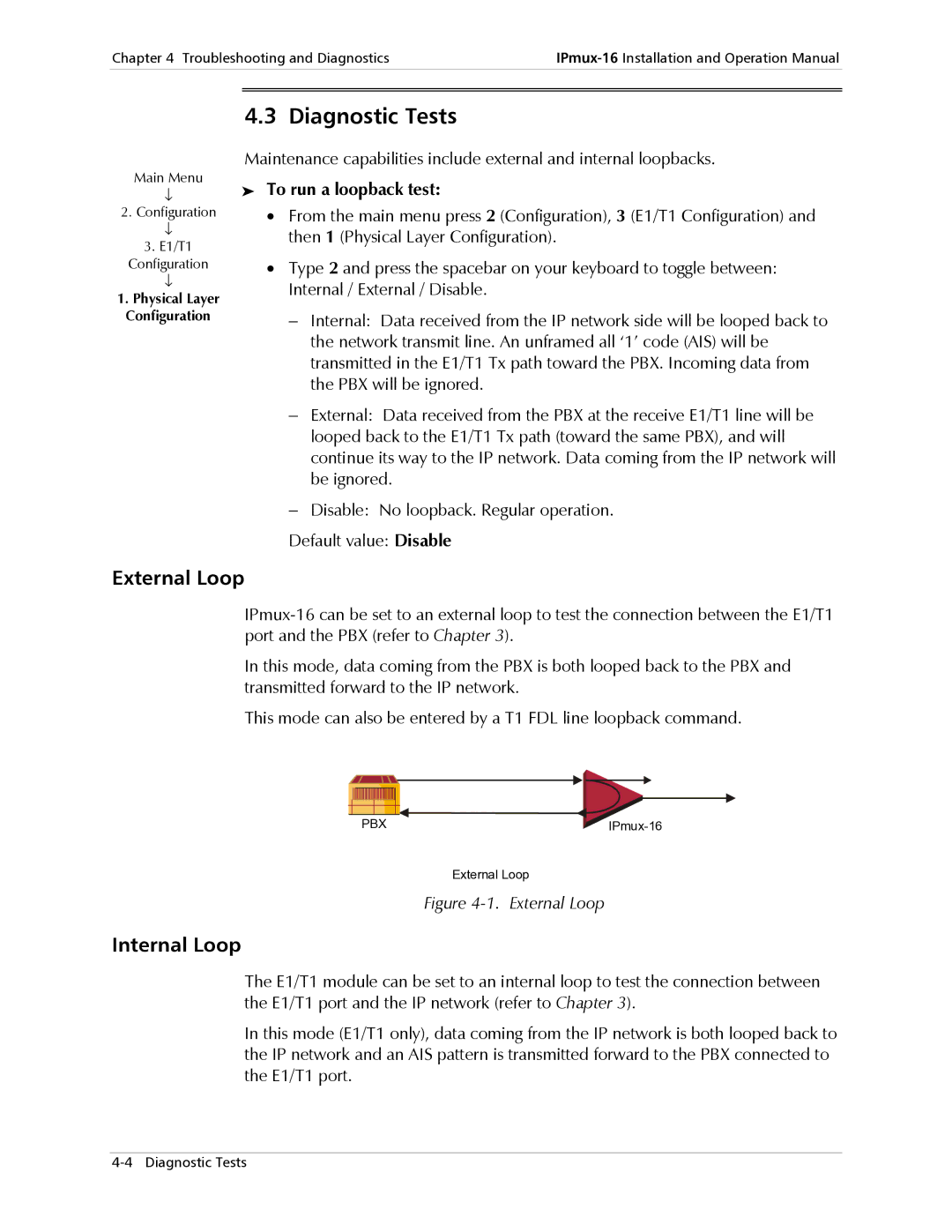
Chapter 4 Troubleshooting and Diagnostics | ||
|
|
|
|
|
|
|
|
|
4.3 Diagnostic Tests
Maintenance capabilities include external and internal loopbacks.
Main Menu
↓
2. Configuration
↓
3.E1/T1
Configuration
↓
1.Physical Layer Configuration
➤To run a loopback test:
•From the main menu press 2 (Configuration), 3 (E1/T1 Configuration) and then 1 (Physical Layer Configuration).
•Type 2 and press the spacebar on your keyboard to toggle between: Internal / External / Disable.
−Internal: Data received from the IP network side will be looped back to the network transmit line. An unframed all ‘1’ code (AIS) will be transmitted in the E1/T1 Tx path toward the PBX. Incoming data from the PBX will be ignored.
−External: Data received from the PBX at the receive E1/T1 line will be looped back to the E1/T1 Tx path (toward the same PBX), and will continue its way to the IP network. Data coming from the IP network will be ignored.
−Disable: No loopback. Regular operation.
Default value: Disable
External Loop
In this mode, data coming from the PBX is both looped back to the PBX and transmitted forward to the IP network.
This mode can also be entered by a T1 FDL line loopback command.
PBX |
External Loop
Figure 4-1. External Loop
Internal Loop
The E1/T1 module can be set to an internal loop to test the connection between the E1/T1 port and the IP network (refer to Chapter 3).
In this mode (E1/T1 only), data coming from the IP network is both looped back to the IP network and an AIS pattern is transmitted forward to the PBX connected to the E1/T1 port.
